GHG testing facility for Palmy
$4.95 Incl GST

$4.95 Incl GST
HE WAKA Eke Noa is back on course – but subject to key changes on gas measurement and sequestration.
Climate Change Minister James Shaw and Federated Farmers president Wayne Langford both confirmed the agreement was alive after HWEN partners and six ministers, included Prime Minister Chris Hipkins, met at Fieldays on Thursday.
The proposed changes to the split gas initiative could deliver some significant upsides for farmers.
Shaw told Farmers Weekly at Mystery Creek Fieldays that the gas pricing initiative had stalled due to Cyclone Gabrielle’s impact, and what amounted to a change in government with the appointment of a new prime minister.
The high-powered Mystery Creek meeting between ministers and industry heads appears to have at least righted what had become a drifting waka.
“We have been needing to get everyone in the same room for some time. By working with industry good groups, we have tried to bring farmers along and clearly that has not worked. We need to work hard to get it together and deliver on the intent of the plan,” Shaw said. His meeting had included industry heads from Feds,
DairyNZ and Beef + Lamb NZ.

Shaw said everyone in the room confirmed they were 100% committed to the partnership continuing and working through unresolved issues.
“But let’s also not let that stop us from working on what we do already agree upon.”
Two key sticking points that he confirmed need resolution are how farmers measure their greenhouse gas emissions, and what vegetation can be sequestered on farm to offset emissions.


“Know your numbers” has been the campaign on gas measurement within the farmgate but has been dogged by having 10 different means of measurement, often delivering 10 different figures.
Shaw likened it to trying to complete an accounting exercise under almost a dozen different accounting protocols.
He was confident many of the irregularities could be ironed out in a matter of months, expecting to see some early progress by Christmas.
“Seventy-five to 80% of farmers already know their numbers, you do not want to throw that out. If we can make the existing systems meet a standard it would be good.”
Sequestration of carbon on farm has also been a bone of contention, particularly for drystock farmers with limited options for emissions reduction.

Continued page 5


where Zespri CEO Dan Mathieson told Farmers Weekly that strong market prospects are buoying hopes for better times ahead after a tough year. Photo: Jamie Troughton/Dscribe Media
NEWS 9


National’s more permissive GE policy has been welcomed by industry leaders and scientists.
NEWS 6
PEOPLE 20
Steve Wyn-Harris reckons we all have some regrets, but he can truly say his are nothing major.

OPINION 18
When

New research is showing how effective forests are at mitigating the effects of extreme rainfall.
TECHNOLOGY 21
Sam Whitelock Farmstrong AmbassadorI’m really busy, I ask myself what are the top two tasks I need to do today?
The judges commended the Booths on their exceptional development of wetlands and critical source areas.
BRETT & FENELLA WHEELER OF



The judges commended the Wheeler’s use of innovative methods to enhance soils and improve water efficiency.
ANJENA, ARJUN, AMREETA & DALJIT SINGH OF LAWWAL HOLSTEINS
The Singh’s passion for progressive dairy concepts led them to install a free-stall system that produces less methane.








OLIVIA MANUSAULOA & JOSH EASTON OF BAYGOLD LTD
Baygold is a great example of a business that is integrating environmental excellence within their kiwifruit production.









JACQUES & VANESSA LE PROU OF JAVA FARM
The judges commended the Le Prous on their cohesive, profitable and efficient dairy system.
GREG & GAIL MITCHELL OF MITCHELL DAIRY FARMS

Greg and Gail’s farm has become a highly productive dairy unit, balancing profitability with caring for the environment.







PETER, JOHN & KAREN M c ERLEAN OF POPLAR PARTNERSHIP
The judges commended the McErleans’ commitment to land stewardship, biodiversity and habitat creation.
IAN KNOWLES OF GLENMARK SPRINGS
Ian’s Waipara sheep breeding and finishing operation is guided by research and on-farm trials.

































CAMERON & ROBERT GRANT OF GRANT BROTHERS
These fifth-generation sheep and beef farmers have a focus on family and productivity.
Steven and Kellie Nichol of Auldamor in Otago have been announced as the 2023 National Ambassadors for Sustainable Farming and Growing and recipients of the Gordon Stephenson Trophy.
Steven and Kellie Nichol of Auldamor in Otago have been announced as the 2023 National Ambassadors for Sustainable Farming and Growing and recipients of the Gordon Stephenson Trophy.
Managed by Grant Bezett, Auldamor is primarily a sheep breeding and finishing operation, with additional cattle grazing, and carbon and production forestry.
Managed by Grant Bezett, Auldamor is primarily a sheep breeding and finishing operation, with additional cattle grazing, and carbon and production forestry.















The team runs 4,500 ewes, 1,500 hoggets and 80 rams, and graze an average of 290 mixed-age beef cows each year.
The team runs 4,500 ewes, 1,500 hoggets and 80 rams, and graze an average of 290 mixed-age beef cows each year.
Their 1,498ha property is located at Clarks Junction, Otago. The Nichol family has been farming in the area since 1871, meaning they have a strong connection to the land and consider improvements and guardianship a priority. Initiatives to improve soil health include a no-till
Their 1,498ha property is located at Clarks Junction, Otago. The Nichol family has been farming in the area since 1871, meaning they have a strong connection to the land and consider improvements and guardianship a priority. Initiatives to improve soil health include a no-till


drilling programme, which has led to improved pasture resilience, better yields, and improved stock performance and animal health.
drilling programme, which has led to improved pasture resilience, better yields, and improved stock performance and animal health.
Early on in their farming journey, the Nichols realised they didn’t need to operate in isolation, and gathered a group of mentors and industry experts to ensure the success of their farming operation.
Early on in their farming journey, the Nichols realised they didn’t need to operate in isolation, and gathered a group of mentors and industry experts to ensure the success of their farming operation.
diversification and adapting production systems, all the while considering environmental impact. Steven is extensively involved with the local community catchment group and is one of several local farmers participating in a greenhouse gas mitigation project. The regional judges commended the Nichols’ high level of knowledge about all aspects of their farming business, noting that – along with farm manager Grant Bezett – they make a great team, with many complementary skillsets.
The National Judging Panel also commended the Nichols for their passion for farming and willingness to bring off-farm knowledge and skills to the table.
diversification and adapting production systems, all the while considering environmental impact. Steven is extensively involved with the local community catchment group and is one of several local farmers participating in a greenhouse gas mitigation project. The regional judges commended the Nichols’ high level of knowledge about all aspects of their farming business, noting that – along with farm manager Grant Bezett – they make a great team, with many complementary skillsets. The National Judging Panel also commended the Nichols for their passion for farming and willingness to bring off-farm knowledge and skills to the table.
Steven and Kellie are constantly evolving their farming business through
Steven and Kellie are constantly evolving their farming business through

“Steven and Kellie are constantly evolving their farming business.”
“Steven and Kellie are constantly evolving their farming business.”
STEVEN AND KELLIE NICHOL REGIONAL SUPREME WINNERS
AND NATIONAL AMBASSADORS 2023
Bryan Gibson | 06 323 1519
Managing Editor
bryan.gibson@agrihq.co.nz
Craig Page | 03 470 2469
Deputy Editor craig.page@agrihq.co.nz
Claire Robertson
Sub-Editor claire.robertson@agrihq.co.nz
Neal Wallace | 03 474 9240
Journalist neal.wallace@agrihq.co.nz
Gerald Piddock | 027 486 8346
Journalist gerald.piddock@agrihq.co.nz
Annette Scott | 021 908 400
Journalist annette.scott@agrihq.co.nz
Hugh Stringleman | 09 432 8594
Journalist hugh.stringleman@agrihq.co.nz
Richard Rennie | 027 475 4256
Journalist richard.rennie@agrihq.co.nz
Nigel Stirling | 021 136 5570
Journalist nigel.g.stirling@gmail.com
PRODUCTION
Lana Kieselbach | 027 739 4295 production@agrihq.co.nz
ADVERTISING MATERIAL
Supply to: adcopy@agrihq.co.nz
SUBSCRIPTIONS
0800 85 25 80 subs@agrihq.co.nz
PRINTER
Printed by Stuff Ltd
Delivered by Reach Media Ltd
our
Andy Whitson | 027 626 2269 Sales & Marketing Manager andy.whitson@agrihq.co.nz
Steve McLaren | 027 205 1456 Auckland/Northland Partnership Manager steve.mclaren@agrihq.co.nz
Jody Anderson | 027 474 6094 Waikato/Bay of Plenty Partnership Manager jody.anderson@agrihq.co.nz
Palak Arora | 027 474 6095
Lower North Island Partnership Manager palak.arora@agrihq.co.nz
Omid Rafyee | 027 474 6091 South Island Partnership Manager omid.rafyee@agrihq.co.nz
Debbie Brown | 06 323 0765 Marketplace Partnership Manager classifieds@agrihq.co.nz
Grant Marshall | 027 887 5568 Real Estate Partnership Manager realestate@agrihq.co.nz
Andrea Mansfield | 027 602 4925 National Livestock Manager livestock@agrihq.co.nz
Dean and Cushla Williamson Phone: 027 323 9407 dean.williamson@agrihq.co.nz cushla.williamson@agrihq.co.nz
Farmers Weekly is Published by AgriHQ PO Box 529, Feilding 4740, New Zealand Phone: 0800 85 25 80 Website: www.farmersweekly.co.nz
ISSN 2463-6002 (Print)






ISSN 2463-6010 (Online)

NZPORK has signed an agreement with the Ministry for Primary Industries to manage a response in the event of a biosecurity incursion impacting the sector. Alongside the Operational Agreement, a biosecurity levy framework for New Zealand’s pork sector will be established to provide a funding option if a disease affecting pigs enters the country. NZ’s pork sector is largely disease-free and the agreement will enable swift action to limit the impacts of any outbreak.
TOUGH TIMES: KPMG’s Ian Proudfoot says people are struggling to connect to what the future looks like, and a boost of hope and energy is needed.

STORY P11
Danny Hailes, who has spent 30 years working for the Alliance Group, has resigned.
Currently the co-operative’s livestock and shareholder services manager, he has worked for Alliance in a variety of roles, including plant manager, company secretary and legal and commercial head office roles. Murray Behrent will act as interim livestock manager.
New Zealand will host an international healthcare summit in November that is expected to draw 10,000 delegates.
Major NZ players in the health and wellness sector, including Zespri and Fonterra, will use the High 5 NZ International Health Industry Expo to promote themselves to buyers from overseas delegations. The summit will held in Auckland from November 25-26 this year.
Fifth-generation farmer and former Nuffield scholar Hamish Marr has been appointed New Zealand’s Special Agricultural Trade Envoy. Marr is an arable farmer based in Methven producing high-quality seeds for global export. The agri trade envoy works alongside the government to support key objectives and advocate globally for New Zealand farmers and growers.
Back in 1860, exporting meat to the other side of the world seemed about as easy as nailing gravy to the ceiling. But a few determined kiwis took the bull by the horns and now our grass-fed beef and lamb is sought-after all around the globe.
At AFFCO, we see the same pioneering spirit alive and well in farmers today. We’re playing our part too – exploring every opportunity to take New Zealand’s finest farm-raised products to the world.
pioneering spirit tells us nothing’s out of reach

THE food and fibre sector is confident it can build on the record export earnings it will achieve this year.
The sector is on track to achieve a 6% increase in export earnings in the year to June 30, expected to achieve a record $56.2 billion driven by improvements in dairy, horticulture and seafood.
Releasing the latest Ministry for Primary Industry’s Situation and Outlook for Primary Industries (SOPI) report this week, Agriculture Minister Damien O’Connor said that performance was achieved despite summer storms and the global legacy of covid.
Despite challenges in global markets from high inflation, the red meat sector continues to underpin NZ’s economy.
Sirma Karapeeva Meat Industry Association

Simon Tucker, Fonterra’s director global sustainability, stakeholder affairs and trade, said the positive outlook for New Zealand dairy exports broadly aligns with the co-operative’s long-term outlook.

“In the short term globally we are seeing softened demand for
































Continued from page 1
Shaw acknowledged the uncertainty around what was counted and what was not for carbon absorption.
“We want to make sure all valid, scientifically proven types of sequestration are recognised.”

The issue has been a gap between what NZ recognises within its greenhouse gas inventory, versus NZ’s targeted gas volumes that are used for
dairy at a time of balanced supply.
“The reduced short-term demand, particularly from China, has had an impact on our 2022-23 forecast farmgate milk price,” he said.
Tucker said Fonterra expects demand to gradually strengthen through 2024 as China’s economy continues to recover from covid.
A horticulture spokesperson said that while welcoming the report, adverse weather and rising costs are placing the industry under extreme pressure.
Meat Industry Association chief executive Sirma Karapeeva said despite challenges in global markets from high inflation, the red meat sector continues to underpin NZ’s economy.
Meat prices have come off record levels and Karapeeva said the sector is waiting for a recovery of China and United Kingdom markets in particular.
Hamish Gow, a professor of Agribusiness at Massey Business School, said the result reflects the recovery in food service, but questions remain about the global impact from post-covid recession and changes to consumer habits, such as eating more at home.
The SOPI report found dairy was the strongest performer for the year to June 30, generating a record $25.1bn in export receipts, up 14% on last year, due to strong sales of infant formula.
This performance was achieved despite a 0.2% decline in milk volume.
Softer markets in China underpinned a 3% dip in meat and
accounting in the likes of the Paris Accord.
“Most countries we compare ourselves to have no gap between the two. There is stuff the atmosphere ‘sees’ which we do not count currently under the likes of Paris commitments, which could be counted in future.”
He confirmed this looked very positive for farmers with additional vegetation, and if it could be scientifically validated as
wool receipts to $11.9bn and a 1% drop in forestry to $6.5bn.
A bumper wine selling season helped lift horticulture revenue 2% to $6.9bn, offsetting lower returns from kiwifruit, apples, avocado and vegetables. Arable returns eased 3% to $245m due to lower demand for ryegrass seed while processed food revenue was up 6% at $3.4bn, boosted by demand for food ingredients and chocolate.
Figures from LIC and DairyNZ show total dairy cow numbers are 1.2% lower than last year at 4.8 million, with the total number of cows estimated to have decreased 176,000 since peaking in 2014/15.
Similarly the farmed area has
sequestrating vegetation, it could be included in future.
Shaw also confirmed his commitment to having farmers’ efforts on pest and predator control acknowledged as a positive contribution to carbon sequestration on farm.
“I am personally 100% committed to seeing that incentive. You can imagine a world where you get carbon credit for clearing pests and predators out of bush, and adding 10% to the
fallen 12,000ha between 202021 and 2021-22 to hit 1.7 million hectares.
The report predicts this trend will continue over the next few years due to tighter regulations relating to freshwater, winter grazing and fertiliser usage.

Kiwifruit and wine led the horticulture improvement, with increases of $2.6bn to $2.8bn in the last two years, and $1.8bn and $1.9bn, respectively.
But two challenging years have been capped by a poor summer for kiwifruit, with volumes of Green down 23% and prices 2% lower this summer, and Gold down 11% due to a lower than average bud break and weather losses.
Yields for green varieties for the
biomass of forest, that should be recognised.”
Langford said after six months of inaction, HWEN is “back on” but he added that the parties “are working on a different conversation”.
He said all parties have agreed to commit to the partnership and to deliver NZ’s commitments to climate change.
The agreement is for a farmlevel split gas approach, with measurement and reporting to be
CHEERS: A bumper wine selling season helped lift total horticulture revenue 2% to $6.9 billion.

2023-24 season are likely to be a further 15% lower than last year.
Wine export returns are next year forecast to overtake kiwifruit, earning $2.5bn compared to $2.4bn.
But it will be short lived, with kiwifruit regaining momentum by 2027, earning $3.7bn and wine $2.6bn.
Wine keeps going from strength to strength, with revenue in the current year increasing 29% due to a massive harvest in 2022 and resilient pricing.
Marlborough yields are expected to return to long term averages next year, causing revenue to fall 2% due to production dropping from a record 532,000t this year to 491,000t in the 2023 vintage.
by a standardised measuring and recording system, which will be available by 2025.
Langford said the partners have also committed to ongoing investment in research and development, education extension and technology uptake. The parties will seek to resolve issues around emission pricing which includes “equity, timing and price levels”, and to also validate recognition of carbon sequestration scientifically.
PRIMARY industry leaders and scientists have welcomed the policies the National Party is taking to this year’s election: to allow the use of genetic technology and delay the pricing of agricultural greenhouse gas emissions.
Citing shortcomings in the current emission’s pricing proposal, farming leaders welcomed the party’s proposal linking it to the availability of technology.
DairyNZ chair Jim van der Poel said delaying agriculture emissions pricing would be a step in the right direction.
“If a NZ Government is going to price agricultural emissions, then the pricing system must be fair and practical for dairy farmers,” he said.
Meat Industry Association chief executive Sirma Karapeeva “cautiously welcomed” a proposed review of the ban on genetic
modification (GM) and gene editing (GE) and encouraged all political parties to support a science-led approach.
“The ban in 2003 was a reasonable response at the time, but the science and regulatory landscape has advanced significantly since then,” she said. Its use needs to be carefully assessed against risks to market access.
“We need to ensure that we take global consumers on the journey with us. We are confident that this can be done with the right regulatory control and oversight framework in place.”
A study published last year in the NZ Journal of Agricultural Research by John Caradus, the chief executive of AgResearch subsidiary Grasslanz Technology, found markets generally accepting of GM in food production without long-term deleterious effects in overseas markets.
Scientists, including former Chief Science Adviser to the Prime Minister Sir Peter Gluckman, have welcomed the permissive use of GM.

Sir Peter told Newshub NZ has lost the capacity to stay at the leading edge of agriculture and environmental protection. Scientists say current rules are not fit for purpose but they want applications considered case by case.
“By restricting the use of genetically modified organisms, NZ is missing out on new tools to fight the climate crisis,” said Professor Andrew Allan, School of Biological Sciences, University of Auckland.

“Our existing crops are under threat and traditional breeding methods can’t keep up with warming temperatures.”
But Jack Heinemann, a professor of Genetics at the University of Canterbury, said NZ is not lagging, adding that after more than a decade of CRISPR technology, just three gene edited organisms are on the global market.
There is much to learn, he said. “Pushing it too fast is the risk, not an economic or climate salvation.”
Producer groups have welcomed policies delaying a charge on greenhouse gas emissions until
they have mitigating technology.
Beef + Lamb NZ chair Kate Acland said this aligns with its position and reflects farmer anger with the He Waka Eke Noa pricing proposal.

“For the last few months, we
have been advocating for the focus to be on establishing a robust and credible measurement and reporting system for agricultural emissions that works for farmers, with a price introduced only if justified once sequestration has been sorted and there are viable mitigations that are widely available for use,” she said.
Acland was also encouraged by the policy to restrict the rate of wholesale conversion of farms into forestry due to the Emissions Trading Scheme (ETS).
Van der Poel said pricing is a tool to facilitate behavioural change but will only achieve that outcome if cost-effective tools and technology are available.
“Before any emissions pricing system is introduced, there must be clarity about emissions targets and how any pricing mechanism will work, along with how all these factors work together. We must get the details right.”
Federated Farmers president Wayne Langford said the policies were consistent with what the organisation sought in its 12-point road map.
and tools, such as CRISPR used in targeted gene editing,” Caradus said.
GENE editing tools will deliver a major boost to the New Zealand plant breeding sector currently struggling to keep up with its major trade competitors.
So says Plant Breeding and Research Association (PBRA) vice-president John Caradus, who welcomed the National Party announcement that it would end NZ’s effective ban on gene editing (GE) and genetic modification (GM) if elected in October.
“This will deliver a major boost to plant breeders by improving access to new breeding techniques
Some of the new breeding techniques did not exist when the Hazardous Substances and New Organisms Act was passed in 1996.
“There are inconsistent approaches to regulating GM plants across different countries and NZ is becoming an outlier particularly regarding the use of new breeding techniques,” he said.
“NZ plant breeders are looking forward to more easily accessing new breeding tools, something already enjoyed by our major trade competitors such as Australia, China, and the US,” Caradus said.
The policy will enable plant breeders to investigate the merits of various new breeding techniques that can reduce the time and cost involved in developing new cultivars.
“Both GM and GEd technologies are valuable options that need to be promoted to solve current challenges and as a result improve not simply economic outcomes but also the environment.
“It opens up an opportunity for plant breeders to effectively evaluate the risks and benefits of cultivars with new valueadded traits in NZ rather than offshore.”
The policy has the potential to add further value to local plant
breeding, and in turn strengthen NZ’s already diverse seed export base, Caradus said.

NZ’s plant breeding and seed multiplication business for the seasonal northern hemisphere markets will also benefit from the policy change, especially in products that deliver environmental benefits, climate change mitigation and sustainability goals.
Wheat growers also welcomed any policy that will keep them competitive.
United Wheatgrowers board director Brian Leadley said staying competitive on the international stage is important.
“We need to keep competitive
with the wheat varieties we grow because without that ability the agronomic benefit of our international competitors leaves us disadvantaged.
“We need the support of new breeding technologies to improve disease and pest resistance, quality and yield.

“The quality parameters around milling wheat varieties are extremely crucial in the seed we put in the ground.
“In terms of food security and matching that with environmental issues, as growers, and for wider NZ communities, support from advanced plant breeding techniques is important in how we produce our crops,” Leadley said.
 Neal Wallace POLITICS Technology
Neal Wallace POLITICS Technology


THE National Party’s policy making it easier to use genetic technology is also a key plank in its plans to reduce agricultural greenhouse gas emissions.


The party’s agriculture spokesperson, Todd McClay, said removing the restrictions would give farmers the tools they need to reduce methane emissions such as geneedited crops, feed and livestock.

It would also ensure farmers have tools developed in New Zealand and abroad to meet emissions targets, such as methane inhibitors, animal vaccines, gene editedgrasses and animal feed, rather than reducing animal numbers.


McClay said in an interview that lower stock numbers and land conversion mean livestock farmers will come close to meeting their 30% reduction in methane by 2030 without an emissions tax.
“The sector is close to meet it 2030 methane target so why put a price on before that? It’s just a tax.”
















Last Sunday the party’s science, innovation and technology spokesperson, Judith Collins, said markets are more receptive to products grown with genetic technology.
If elected the party will allow the use of gene editing (GE) and genetic modification (GM), albeit retaining restrictions for use on humans.

Collins said NZ has been left behind with its tight controls, with the technology used widely in China, Australia, Europe and North America. She said 2.7 billion hectares of land were planted in GE or GM crops between 1996 and 2019.

In contrast the NZ Environmental Protection Agency has approved fewer than 10 GE or GM products for release outside laboratories.
If elected, the party will establish a dedicated biotechnology regulator within the Ministry of Business, Innovation and Employment to oversee the technology and manage ethical concerns.
The party’s climate change policy proposes pricing on farm emissions by 2030 at the latest and a split gas approach, and still aims to reach net zero by 2050, but McClay said any shift to using GWP* to measure methane will be decided by a scientific board.
The policy also includes recognition of onfarm sequestration but keeping the sector out of the Emissions Trading Scheme (ETS).
The policy establishes an independent board, with a power of veto retained by the ministers of Climate Change and Agriculture, to implement a pricing system.


The policy includes rules limiting the wholesale conversion of productive farmland to exotic forestry including a three-year moratorium on whole-farm conversions to forestry on land classed LUC one to five. Farmers can plant up to 25% of their land in this class in forestry.
On LUC six it proposes setting an annual limit of 15,000ha for whole-farm conversions to exotic forestry that are registered for the ETS.
This will be reassessed every three years.








For LUC 7-8 land, no forestry limits will be introduced.


Acknowledging landowner property rights, McClay said the ETS carbon market has distorted land prices and means in some areas forestry generates more income than livestock.

McClay is confident urban people understand that farmers should not be taxed for methane when they do not have tools to reduce those emissions.
MITIGATION: The National Party says easing of restrictions on gene editing is key to mitigating greenhouse gases in agriculture.

change
A$17.7 MILLION greenhouse gas testing and research facility is to be built in Palmerston North to monitor and measure emissions from cattle.
The new facility is part of a suite of measures aimed at supporting farmers to reduce their emissions while maintaining their global competitive edge, Prime Minister Chris Hipkins and Agriculture Minister Damien O’Connor said at Fieldays.
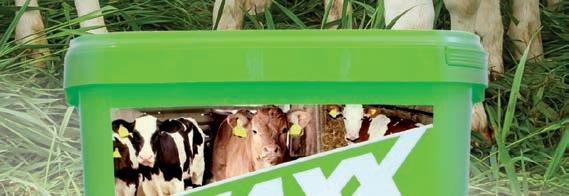
“Our goal is to partner with farmers to ensure New Zealand retains its brand as a lowemissions, environment-friendly source of food and fibre,” Hipkins said.
“Farmers can’t do it all on their own and agriculture is too important for the government not to be investing in better environmental outcomes. We want the best price for the best products, produced by the best farmers in the world – and our plan is working.
“More and more people are choosing to buy products that come from a place where animals are treated well, there is a low impact on the environment and


production contributes minimally to global emissions.”
The government also announced that $4.3m would be invested in soil and grass research, including a faster hybrid breeding system for ryegrass to increase pasture resilience as well as boosting onthe-ground help and advice for farmers and growers through a career pathways scheme.




The facility is funded by the Centre for Climate Action on Agricultural Emissions, its primary sector joint venture partner, and AgResearch. Centre executive director Wayne McNee announced that the organisation will operate under a new trading name, AgriZeroNZ.
As for the GHG centre, Massey University in Palmerston North will supply land for the facility and cattle for testing. The facility is expected to be built by September next year.

It will include 12 respiration chambers that allow researchers to measure and monitor changes to methane emissions in individual cows.
This latest project follows recent joint venture investments of $2.5m to further work on a livestock methane vaccine, and $1.8m to Ruminant Biotech to develop its slow-released methane-inhibiting bolus.


The government also announced two new pasture projects, with $4.3m co-invested with industry through its Sustainable Food and Fibre Futures fund to look at soil and grass to help farmers reduce costs, maintain good pastures, and remain a world-leading sustainable producer of high value food.

O’Connor said the discussions he has had with companies such as Tesco and Waitrose and the

emissions reduction policies of these companies justify these investments.
“Let me quote what Nestlé want ... By 2050, 50% of key ingredients will be sourced from regenerative practices. This is Nestlé, the single biggest customer of our single biggest company.” Similarly, Tesco had advised its suppliers that they had to disclose their emissions by 2021, establish “net zero ambition” by 2022
and set science-based targets to support delivery by the end of this year, he said.
“This is what is happening around the world. We are really efficient and good dairy farmers but that is not good enough in a world that is panicking.”
O’Connor said this is why the government is partnering with industry leaders to evolve to best farm practice.




ZESPRI CEO Dan Mathieson is hoping what has been a year to forget is now firmly in the industry’s rear-view mirror as the sector moves through the new season, with strong market prospects buoying hopes for better times ahead.

Speaking at Mystery Creek Fieldays, Mathieson freely acknowledged the challenges the sector has faced on almost every front over the past year, kicking off with last year’s damaging labour supply shortage.
“The shortages resulted in significant quality issues, which came on top of multiple weather events,” he said.




Poor harvesting standards resulted in fruit manifesting damage weeks after harvest and prompted two major writedowns in crop values, partially attributable to the labour issues.
But Mathieson said the sector had responded to the sharp lessons of last season, with greater vigilance from harvest onwards resulting in a higher quality fruit reaching market.
“Growers are paying greater attention to harvesting in their orchards. In 2022 only about 4050% of growers were present to view harvest. That has risen to over 90% this year,” he said.

On a recent Farmers Weekly visit to Seoul, South Korea, Zespri’s country manager expressed
concern about the availability of fruit for the entire selling season, given the significant dip in fruit volumes this year, down to about 140 million trays.
Mathieson acknowledged it is likely there will be a shortage of fruit in the second half of the season that will affect all key markets.
Growers are paying greater attention to harvesting in their orchards. In 2022 only about 40-50% of growers were actually present to view harvest. That has risen to over 90% this year.
Dan Mathieson Zespri
Come the 2024 harvest, the industry expects to face a significantly different scenario, with crop volumes estimated to soar back up to about 200 million trays, dependent upon weather conditions. With prospects of a more La Niña-type winter ahead, growers will be looking for typical winter frosting conditions to help lift bud levels. The growing condition was missing in last year’s prolonged warm, wet winter, which was followed by a diabolical spring that included a devastating frost in October that wiped out some growers’ entire crop.


Mathieson said overseas demand for fruit is strong again. Despite

some softening of Chinese demand for some New Zealand-sourced products, including red meat, lately, he said it remains strong for kiwifruit in Zespri’s second biggest market after the European Union.

“Overall, the Chinese economy is still recovering [from covid] but our target consumers tend to be in the mid to upper income bracket and are wanting more fruit.”
Asked about the issue of illegally grown Zespri variety SunGold fruit in China, Mathieson said growth of the crop in the past year was slower than anticipated.
A year ago, estimates were the Chinese were now growing about 12,000ha of the crop, compared to NZ’s licensed area of 9000ha.
Mathieson said he is increasingly confident that Chinese




government regulations on plant variety rights – which were upgraded a year ago – give Zespri more power to seize and trace crop found in retail outlets. Previously the fruit had to be identified on the actual vine.





A working group plans on visiting China soon to liaise with Chinese growers and authorities.


ACT will scrap the Zero Carbon Act tying any emissions price to that of New Zealand’s five main trading partners if it is part of a government following this year’s election.
The act will be scrapped with the caveat that if farmers in countries who are NZ’s
Now’s a great time to review the calf transport rules and check that your shelter and loading facilities are clean and well maintained.
Calves less than 14 days old, that are leaving the farm for sale or to go to the meat processor, must be fit for transport and meet these requirements.
Calves must:
1. be at least four full days old (96 hours)
2. have a dry, shrivelled navel
3. have firm, worn hooves
4. be able to stand up, walk and bear weight evenly on all four limbs
5. be able to protect themselves from being trampled or injured by other calves
6. be free from injury and birth defects (e.g. blindness, contracted tendons) that would mean they cannot withstand the journey
7. be free from scours or other signs of disease that would mean they cannot withstand the journey
Calves should be well-fed with bright eyes and ears up.
biggest trading partners are not paying a price for their methane emissions, neither should NZ farmers.
“Farmers in countries who are our biggest trading partners are not paying a price for their methane emissions, and under ACT neither would New Zealand farmers,” ACT MP Mark Cameron and ACT candidate Andrew Hoggard said at the launch of the policy at Fieldays.

The Zero Carbon Act’s targets and the Climate Change Commission will also be disestablished.
“Farmers have had a torrid six years under Labour. They’ve had to put up with an avalanche of regulation and red tape from out-of-touch Wellington bureaucrats and the government has tried to sacrifice them to the climate gods by implementing an emissions-pricing scheme that would only send production to less-efficient countries,” Cameron said.
He said ACT is the only party calling for agricultural emissions to be measured accurately. Climate scientists have pointed out that the New Zealand Government’s calculations refuse to even measure methane as the short-lived gas that it is.
Candidate Andrew Hoggard said Labour and the Greens are undermining efforts by the people who care most about the environment.
“Farmers have the biggest incentive to care about the environment because they make a living from it,” he said.
“A Party Vote for ACT is a vote to end the endless red tape and regulation, to give farmers certainty they won’t be unfairly taxed, to ensure they can get staff when they need them, and to give them – not central planners in Wellington – control over how they do things,” he said.
ACT’s agricultural policy includes:
• A “genuine split gas approach”, acknowledging the fundamental difference between livestock methane and carbon dioxide.
• Shifting responsibility for farm plans from Wellington to regional councils, while ensuring a consistent template is used and existing plans remain valid.
• Making sure people with practical animal handling and farming experience are appointed to the National Animal Welfare Advisory Committee.
• Removing barriers stalling the uptake of new technologies by liberalising GE laws.

Calves must have suitable shelter at all stages of their journey – before loading, during transport, and at their destination.
Loading facilities may take any form - a ramp, a raised platform, a tractor tray - provided they meet the criteria in the regulations.
Loading facilities must:


1. allow calves to walk on and off stock transport vehicles
2. minimise the risk of a calf injuring itself, becoming distressed, slipping, or falling off
If in doubt, leave it out. Check
Learn more about the calf regulations at mpi.govt.nz/animalregs
• Addressing workforce shortages by removing the cap on the Recognised Seasonal Employer scheme, abolishing labour market tests and wage rules, removing the “work to residence” divide for occupations on the Green List, and bringing back 90-day trials.

• A new minister and Ministry of Regulation to prevent pointless regulation and red tape from being introduced.
• Getting rid of Three Waters and bringing back a local approach to water resources.
• Liberalising water storage requirements to increase farmer resilience to climate and seasonal pressures while maintaining aquifer health. And allowing councils to opt into a system in which water resource consents would be converted into timebased tradeable water permits so farmers could trade water allocations according to a sensible pricing system.
• Bringing back live animal exports, under a world-leading animal welfare standard.
• Scrapping Significant Natural Areas and “restoring private property rights”.
• Scrapping the “ute tax”.
 Hugh Stringleman NEWS Agriculture
Hugh Stringleman NEWS Agriculture

PRIMARY sector leaders believe there is considerable anxiety about the future in the absence of clear pathways through the regulations that are coming, the 2023 KPMG Agribusiness Agenda says.



Global head of agribusiness for KPMG
Ian Proudfoot said people are struggling to connect to what that future looks like, and a boost of hope and energy is needed.
He titled the annual agenda report Energising a World of Anxiety.
“Perceptions of climate change have changed with recent weather events, and our food and fibre production systems are not as resilient as they need to be,” he said.
“We must accelerate the thinking around different farming systems, potentially bringing some of them indoors and investing in climate tech and biotechnologies.”
Proudfoot said it had been another challenging report to write because much is happening but there are no clear pathways ahead.
“Leaders believe that there is significant anxiety about what the future holds across the sector and concern about whether the sector and their organisations have the resources, capabilities and skills ready to respond to what lies ahead.”
KPMG polls 160 sector leaders through surveys, group discussions and one-on-one interviews.
Emerging leaders were included and for the first time the priorities of senior executives were analysed separately from those of leaders in governance roles.
Existing leaders placed a higher priority on filling job vacancies than emerging leaders, who are concerned about building the talent pipeline.
There was divergence, with only two of the top 10 priorities ranked equally – No 1 priority being world-class biosecurity and No 4 being objective assessment of treeplanting programmes.
“Emerging leaders expressed disappointment that He Waka Eke Noa, which had shown such promise because it represented a real and genuine opportunity for true sector-wide collaboration to resolve one of its biggest challenges, appears to have faltered at the last hurdle.”
Proudfoot said the adverse weather events over summer have changed the conversations about climate change.
“With the extent of change that the sector faces, it was not surprising that leaders believed that people are looking for specific, actionable advice about the steps they should take to enhance business resilience and build a platform for future growth.”
New Zealand seemed to have an all-or-
nothing approach to biotechnology, whereas other countries have found ways to have blended positions and comfortably exist in the grey.
While some industries have a strong interest in remaining GMO-free, others might see environmental and economic benefits from gene editing.
NZ has avoided the difficult discussions, but these shouldn’t be too hard to have, Proudfoot said.
KMPG’s surveying found considerable movement this year in the top 10 priority rankings of respondents.
The top two positions, however,

remained as in previous years – worldclass biosecurity and high-quality trade agreements.


At No 3 is enhanced immigration settings, up from ninth position last year.
Fourth is broadband equality for all, down one place. Fourth equal is the tree-planting concerns, particularly plantations with the primary purpose of permanent carbon sequestration, as the highest of the new entries.
Sixth is acting on results of gene editing discussions, a newcomer to the top 10.
Seventh is investment in resilient rural infrastructure, another newcomer.

No 8 is accelerating innovation partnerships, down two places.
A newcomer at ninth is maximising sustainable use of oceans and 10th is telling engaging provenance stories, down two positions.
The items to fall out of the top 10 were to do with sector careers, resilient supply chains, transition to net zero and building water storage.
“The lack of discussion around water infrastructure is hard to understand, particularly given the disruptions that climate change is bringing to our traditional weather patterns,” Proudfoot said.
Each season, hard working farmers and rearers seek better ways of setting themselves up for a better, more productive year ahead. Here at NZAgbiz, we work with our customers to also think about next year, and the years after that. Greater efficiency and productivity in the future requires making the best decisions early.


Start with quality. Start with research and proven results. Start with kiwi-owned and excellence in sustainability. Start with the future in mind.

IF YOU’RE FOCUSED ON FUTURE PERFORMANCE, YOU’RE IN GOOD COMPANY.TOUGH TIMES: Ian Proudfoot said people are struggling to connect to what the future looks like, and a boost of hope and energy is needed.

FONTERRA is to formalise investment in nutrition science with a new standalone company called Nutrition Science Solutions, with its own board and executive group.
The first investment is a minority shareholding in San Francisco-based Pendulum biotech company for US$10 million ($16m) for an undisclosed stake.
Nutrition Science Solutions (NSS) will make direct investments, enter into partnerships and incubate products and ventures, Fonterra CEO Miles Hurrell said. He declined to say how much

money NSS would have available.
“When we released our longterm strategy in September 2021, we identified nutrition science solutions as an area with future growth potential.
“Nutrition science is a segment of the global health and wellness category that goes beyond
everyday lifestyle and wellness products.
“Given our expertise in dairy science, we committed to exploring the potential for Fonterra to play more boldly in this space.”
Hurrell made the announcement in conjunction with his senior executive team member Komal Mistry-Mehta, chief innovation and brand officer.
Miles Hurrell Fonterra
She has oversight of the fastgrowing active living and health and wellness products and opportunities and will be one of the NSS board members. The CEO has not yet been appointed but Hurrell expects an announcement of that person and other board members in short order.
Hurrell said NSS will seek out,
PLANNING: Miles Hurrell says Nutrition Science Solutions will seek out, partner with and invest in global start-ups.
partner with and invest in global start-ups who will benefit from access to Fonterra’s dairy science expertise and understanding of the global market.

Fonterra will benefit from
access to emerging technologies, advancements in science, and novel channels to market.
“This is a new way of working for Fonterra, but one in which we see a lot of potential,” he said.
Wool
TWIN sisters Ashlin and Shawna Swann are boosting their skills on a handpiece thanks to on-farm training and online videos through Agricademy’s WOMOlife courses. They’re also earning good money while they learn.
At 14, the Wairoa College teens are already competent shearers, encouraged by their family, and they’re keen to upskill further. They mostly work in the school holidays, and lambing season is when the work really kicks in. They shear their own pet lambs, as well as helping their dad with his lambs, and earn extra money crutching too.
The sisters recently attended a three-day in-shed WOMOlife training course at Tautane Station, Herbertville, where they learnt
new skills to add to their toolkit, and how to use a grinder – vital for any budding young shearer.
The training covered all aspects of working in a shed, including pressing, grinding and sweeping. They are using the online video
content to learn more, including the different positions used in shearing, and the importance of exercise and healthy eating.
Mum Sonya was keen for them to attend the course, after hearing about it from another student.
“Shearing is our background. We’re farmers and we all shear. It’s a good after-school, holiday or weekend money maker. The feedback I got from Tautane was awesome. They learnt new skills to add to what they have already, it was definitely a bonus.”

Said Ashlin: “You can make lots of money, it’s cool and it’s a good skill to know.”
Agricademy is currently running an offer for all high schools to purchase specific online content in wool and dairy, for an unlimited number of students for just $1000 + GST.
Students can get a head start in ag watching the online bite-sized videos.
Housed under the Agricademy brand are two “stalls”: Get Milking, for dairy, and WOMOlife, for wool.
Waikato farm advisor Regan McCorquindale encourages those new to the dairy industry to watch
the online training. “The online component is essential and would help you feel more comfortable when you get to a farm and you’re familiar with the way that the cow shed works, the cupping works, the whole process from start to finish.”
What’s included?
• Each student will have access to over 50 videos introducing them to roles on farm and in shed.
• Videos can be watched at any time and from anywhere, or a school may decide to make the content part of inquiry learning or classroom learning.
• Students would have access to the resources for a single school year.
MORE:
Learn more by visiting: agricademy. co.nz/school-opportunities

Nutrition science is a segment of the global health and wellness category that goes beyond everyday lifestyle and wellness products.










































Read, listen to, and watch what is happening in Aotearoa New Zealand’s food and fibre sector by scanning the QR codes or following the links. Answer the questions to complete the exercises.




The Netherlands banned preventative use of antibiotics, and blanket-use dry cow therapy in 2012. This has resulted in a wide range of benefits, including less antibiotic resistance.


lnkiy.in/dry-cow
Have a go:
1. Overuse of antibiotics can lead to antibiotic-resistant bacteria. Why is it something we want to avoid?
2. What is ‘dry cow therapy’ and when is it used in New Zealand?
3. What is the goal posed by the New Zealand Veterinary Association by the year 2030?
Stretch yourself:
4. In the three years since the ban there was a 50% reduction in the use of dry cow antibiotics. During the same time what was the percentage decrease in clinical mastitis cases?
5. At the time of banning blanket-use antibiotics in the Netherlands the bulk milk somatic cell count (SCC) was above 200,000 and by 2018 it dropped to about 170,000. What does the SCC indicate and why is it measured?
Co-operation between people goes way back to early humanity. Learn about the modern form of co-operatives that businesses use today.
lnkiy.in/co-op-info
Have a go:
1. What was the purpose of the first recorded co-op The Penny Capitalists?
2. When was the first co-op in the southern hemisphere established?

3. This first co-op went on to become part of which leading New Zealand co-op?
Stretch yourself:
4. What are the benefits of a co-op structure?
5. What are any negatives you can think of with a coop structure?
Farmers are looking to upgrade their systems to improve environmental outcomes and business risk. Researchers have uncovered interesting finance options to fund these developments.
lnkiy.in/fund-change
Have a go:
1. What are some farm systems that need to be upgraded?
2. Composting shelters are one type of upgrade. What are the benefits for the farm?
3. What are some of the lending options looked at in the study?
Stretch yourself:
4. Why might a bank not lend money for a partial land use change?
5. Advisers have been running workshops with farmers, what are they hoping to achieve?
Changemaker Cheyenne Wilson talks about why she loves her work as graduate Māori relationship partner for DairyNZ. bit.ly/industry-changemaker

Have a go:
1. Cheyenne worked on farms after leaving school, where did she study?
2. How do studies of the environment and society fit together?

3. What is the lens that Cheyenne brings to her work?
4. What is Cheyenne doing to help farmers in her role?
5. What does Cheyenne love and find exciting about the dairy industry?
Stretch yourself:
6. What is manaakitanga and kaitiakitanga?
7. How has Cheyenne built up her leadership skills?
Artificial intelligence (AI) is now hard at work on American farms. New machines are used to kill weeds and harvest crops, speeding up the process. Watch this story from NBC News to see how it works on one farm.
lnkiy.in/killer-robot
Have a go:
1. What is the machine designed to kill?
2. What is AI particularly good at doing?
3. How many different crops and how many different weeds can the machine detect?
4. How many people can the machine do the work of? How long will it take to pay for with the labour savings?
Stretch yourself:
5. The American Labour Union is concerned workers may be displaced by AI. What are the ways that AI could be used to benefit workers?
6. What did the Oregan students develop? Think of and describe another way AI could be used in our food and fibre sector.
A key ingredient in Alzheimer’s medication could come from daffodil crops grown in South Island high country.
Have a go:
1. What are thought to be the benefits of growing daffodils in soggy cold conditions?
2. Daffodil production is underway in the Welsh high country. Why has New Zealand been selected as a good option to help year round production?

3. Why might daffodil crops be a good option to integrate with existing sheep farming systems?
Stretch yourself:
4. Why will it take several more years before researchers know if the daffodil plan is a good one?
5. What benefits can you think of from diversification on a farm?


Learn about on farm scenarios, use real life case studies and understand what it takes to work in the ag sector in New Zealand. Students also have the opportunity to apply for our Ag&Ed Innovation Challenge, where 20 lucky students will work in teams to address key issues in the ag sector.


Applications are now open!
Farm water usage is looked at in this Agricademy video. After watching the video complete the online quiz to test your knowledge.
bit.ly/agricademy-water
Have a go:
1. To know how much water is needed per day on a dairy farm, what do you need to know the numbers of ?
2. To measure how much water is coming into the holding tank at the milking shed, what information do you need to know?
3. You can then use this figure and a formula to work out how much water is coming into the farm each day. True or False?
4. What might affect the amount of water coming into the holding tank over time?




Parents and teachers sign up to receive Ag&Ed in your inbox. agrihq.co.nz/our-education-resources




Whether you’re just starting out, or looking for that next step, there are education and training options. Some training options are even on the job, which means you’ll upskill and learn while you are earning.
Other courses are free of charge, or have support options available.
THE National Party did us all a favour last week by resurrecting the debate on genetic modification.
Its policy of a more permissive approach for genetic modification (GM) is a reminder that we need every tool available given the scale of the challenge from rising production costs and environmental and climate change threats.
It is unrealistic to think we can efficiently and economically confront these with only existing or new versions of our current tools.
The Royal Commission on Genetic Modification in 2001 suggested we take a precautionary approach in its adoption, but subsequent legislation was so restrictive it effectively amounted to a ban.
Technology has since advanced and the rest of the world has embraced the use of GM.

In 2019 the United States planted 71 million hectares of GM crops, Brazil 53
million, Argentina 24 million, Canada 12.5 million, China 3.2 million, Australia 600,000ha and Spain 100,000ha.
The European Union has launched a review of its GM policy, which was cautious and backed by legislation that tightly restricted its use.
The EU appears to be acknowledging the technology has evolved and can be part of future solutions.
The use of GM has moved beyond inserting genes or DNA from one organism into another.
The 2012 development of CRISPR technology allows the precision editing of individual genes and the influence of gene expression within an organism’s DNA.
A study published last year in the NZ Journal of Agricultural Research found that markets are more accepting of its use in food production, and using GM plants will not have long-term deleterious effects in overseas markets.
The authors advocate regulating benefitrisk issues associated with GM end-use products rather than the processes used in its development.
The substantial challenges facing the world and the scientific advances made mean this technology can no longer be ignored.
But, given our deserved status as a preferred food supplier, this is not to advocate its unrestrained use. Markets and consumers will be the final arbiters.
As the Meat Industry Association sensibly
said, the adoption of GM needs to be carefully assessed against risks to market access.
“We need to ensure that we take global consumers on the journey with us. We are confident that this can be done with the right regulatory control and oversight framework in place,” MIA CEO Sirma Karapeeva said.
There is already GM technology under development that shows potential in addressing some challenges, such has AgResearch’s HME GM ryegrass.
It has been shown in the lab to be drought tolerant and reduce methane emissions by 23%, but because of our restrictive rules, field trials have to be held in the US and Australia.
This also indicates that its use in NZ is highly unlikely under current regulations. Provided its performance stacks up on farm and it meets the “will not damage markets” criteria, the use of HME ryegrass in NZ seems a no-brainer.
This is especially so given the government wants to charge a levy on agricultural greenhouse gas emissions, yet farmers currently have few tools to reduce those emissions.

People are generally cautious about GM and no doubt some will continue to oppose its introduction, so selling it as safe and useful technology will be challenging.
But given its potential contribution to solving the world’s most pressing threats, surely it is a challenge worth pursuing.
I WAS thrilled to read that the Ministry for Primary Industries is having a hub at National Fieldays to tell young folk what a great career can be made in farming.
I hope they have young folk there in dirty gumboots and overalls telling the story – not MPI Wellington staff twice to three times the young folks’ age in corporate jackets and suits and brand new Red Bands bought for the occasion.



When teaching dairy farm trainees at the Waikato Polytech some decades ago, the two pearls of wisdom I still remember from the 15- to 16-year-olds were, when going for an interview (remembering your clean overalls and gumboots), call in at the nearest shop or service station, and ask the way to the farm – taking detailed notice of the reactions and comments.
And the other one was to ask if the lady boss on the farm who ran the house was signed up on Jenny Craig. Questions still relevant for the MPI Hub, I suggest.

IT IS not often that a wickedly complex policy problem, compete with rafts of untested assumptions and unknown consequences, is reined in before it can be unleashed on the unsuspecting public.
Still less common is the soul searching and deliberation that appears to have taken place regarding He Waka Eke Noa (HWEN) in the shadow of an election, a time more commonly known for frenzied law making and last-minute urgency.
The nation, and more particularly rural folk, should be thankful for the stay of execution and take this time to ask ourselves what we really want.
The complexity of the underlying science has been a focal point for many calling for simpler, fairer, or more transparent options than either HWEN or the Emissions Trading Scheme (ETS) can offer, but few people have taken much time to understand what should have been the focal point all along: how to mobilise farmers towards the kind of innovation and change that they can embrace.
There will always be large sticks required to drive unwilling people towards outcomes that are at odds with their values, their economic motivations or their aspirations for their land, and no matter the
size of the stick, the sheer scale of the rural landscape will largely provide ample room for dodging said sticks and waving them back in defiance.
The regulatory path by definition must be simple enough to apply. If it isn’t then it’s almost impossible to distinguish between those who are fully compliant and those who aren’t – especially when those who aren’t have little reason to advertise the fact.
Short of employing armies of people to undertake monthly stock counts on remote back country roads, there appears little reason to believe that enforcement would come easily.
For those who still believe that HWEN was the answer, it’s worth understanding exactly what the trade-offs were. In order to deliver any meaningful mitigation options that could realistically be recognised at farm level, farmers would need to collect and report the following detailed data to HWEN: including the area of the farm and the monthly or quarterly stock tallies for each livestock class and age group; quarterly (or at each farm management intervention) provide weights by stock class and by age range; the timing and tallies for animals moved on and off different forages; time off feed (stand off); all imported feed; the planned start of mating; weaning percentages or replacement rates and sales dates; the weight of meat, milk, wool and velvet produced by each age range and
stock class; the area of the farm in each land slope class; effluent application methods (if any); and monthly urea application rates split into area, urease inhibitors and the method of application used.
All of these things must be reported by every single farmer nationwide on a continual basis year round in order for the system to be accurate, and in return for this veritable hoard of
information, fortunate farmers would, in the first instance, be able to claim minor mitigations for using low-methane or low nitrous-oxide-inducing forages, and for fertiliser inhibitors and potential manure management. If you happen to be a farmer without improved pastures or crops, who doesn’t use urea, then sorry, there are no mitigations proposed for you until sheep genetics become freely available in approximately 10 years. You will be gathering and reporting all of this detailed information just so that we know how much money to take off you.
Sequestration, hoped to be the game changer (which it most certainly is if you’re in the ETS planting pine trees) faced different challenges, as the eligible trees proposed in HWEN would struggle to cover the cost of
their own stock-exclusion fencing – much less offset emissions liabilities or sequestration measurement costs.

It is worth remembering that NAIT tracks only one variable – and yet remains plagued with non-compliance and ghost cattle and has taken 10 years to achieve barely 70% indicative compliance, even with the introduction of well-advertised enforcement measures.
Back, then, to what we really want, which can surely be summed up by a future where change is aligned with the economic realities, community values, and aspirations for the land that our rural communities are stewards of. Anything else is doomed to fail, be exploited, or even worse, demonstrate to the world the futility of even trying.
We never asked farmers how they envisioned living up to the ever higher expectations of society and our customers into the future, and the operating model of HWEN, tight timeframes and looming ETS threat ensured these questions remain largely unanswered today, but if we are to have any hope of embracing the opportunities that exist in landbased solutions to environmental challenges, we need to start asking them now.
with the subsequent increase in production. Farmers I know who have navigated the central/ local government minefield have been subject to considerable cost, unnecessary harassment from ignorant local government officials and massive time wastage.
Feds also wants an urgent review of methane targets, rethinking of the Emissions Trading Scheme, scrapping the punitive ute tax, fixing our infrastructure and the fixing of our unworkable freshwater rules.
Those rules are to me a prime example of a Wellington-centric bureaucracy enthusiastically adopting a one-size-fits-all approach.
It will never work.
LAST week was interesting politically, with Federated Farmers releasing its 12-point “election platform” and National releasing its biotech policy.
Both will resonate with farmers.
The Feds message to politicians was to stop tying up farms in red tape and impractical regulations. Its Election Platform is well thought out and practical.
Acting president Wayne Langford was specific about what the organisation wanted, saying it was “being very clear about what we believe needs to be done to restore farmer confidence, support thriving rural communities, improve environmental outcomes and unlock the potential of our primary sector for the benefits of all New Zealanders”.
There isn’t anything in the 12 points I would argue with. They want to support the better use of technologies, which the National Party has backed with its biotech policy.
They also want to unlock potential through water storage. As I’ve previously written, our current rules in this area are bizarre. We happily let over 90% of our water run out to sea rather than allow storage
In addition it wants to get the Resource Management Act reform right, which will be a mammoth task hampered by intransigent officials, and to simplify Significant Natural Areas. I believe the entire SNA saga has been poorly handled and has created unnecessary stress.
We need to bring science rather than folklore into the SNA discussion.
So well done Feds. The Election Platform is a well thought out, non-political statement that accurately reflects the concerns of the rural sector.
The second political event of the week was the release of the National Party’s biotech policy by its science, innovation and technology spokesperson, Judith Collins.
I must confess I was less than impressed by its agricultural policy as it missed the mark in my view and was somewhat underwhelming, as have been its various agricultural spokespeople.
The biotech policy correspondingly is well researched, well written and exactly what New Zealand needs.
It is difficult to argue with the “Harnessing Biotech” policy.
It quotes Professor Dame Juliet Gerrard, who is the Prime
BACK ON THE TABLE: National’s biotech policy, which will cover advancements such as CRISPR, is well researched, well written and exactly what New Zealand needs, says

Why have significant governments ignored the benefits of GE? It is beyond me.
Minister’s Chief Science Adviser. She tells us that “our current legal and regulatory frameworks are not fit for purpose”. I agree.
National then quotes Professor Sir Peter Gluckman, the former Prime Minister’s Chief Science Adviser. Gluckman said that “the science is as settled as it will be. It is safe, there are no significant ecological or health concerns associated with the use of advanced genetic technologies. If we are to remain a biological economy we will have to have another (national) conversation about it.”
Gluckman has previously encouraged a debate on GM, but few seem to have listened.
National’s “Harnessing Biotech”
plan has three key planks starting with ending the effective ban on GE and GM in NZ. The technology has been around for decades and, as Gluckman has pointed out, “it is safe and there are no significant ecological or health concerns associated with it”.


Why then have significant governments ignored the benefits of GE? It is beyond me.
The other two features of National’s biotech policy are to create a dedicated regulator to ensure the safe and ethical use of biotechnology and to streamline approval for trials and use on nonGE/GM biotech.
The opposition to National’s policy announcement was predictable.
GE Free NZ was apoplectic, claiming the policy was “throwing both the public and protection of nature under a bus”. How, it didn’t say.
Greenpeace claimed instead of GE we should be reducing cows and fertiliser use. So instead of
an ethical increase in production, Greenpeace would prefer an unscientific lurch into poverty.
Environment Minister David Parker told me that it was troubling National hadn’t mentioned the risks that changing our GE-free brand posed to our primary exports.
The answer to that is there isn’t a risk and I’d remind Minister Parker that the Productivity Commission has called for renewed conversation around GE. ACT has always had an enlightened GE policy and the Green Party was comfortable with reviewing our GM laws, which was reassuring.
The issue is that I can find absolutely no scientific justification for our current GE/GM policy – but plenty of unfounded emotion.
I’d describe the opponents of GE in just one word – Luddites. So, thanks to both Feds and National for encouraging policies that will increase our prosperity.
then and has remained a classic.
The sentiment is a good one, but I doubt if there has been a human who could honestly say that they have no regrets.
I’m fortunate in that I don’t have any major ones.
I nearly went off to Durham University to study archaeology but chickened out and travelled the well-trodden path to Lincoln College. Lincoln was great, I had a fun time and made friends and contacts that have lasted me a lifetime.
Better still, met a young lady in Christchurch who turned out to be a terrific wife, friend and mother.
But I doubt I would have been any worse a farmer than I was in my first couple of years with an archaeological degree instead of agriculture.
Maybe in a parallel universe somewhere, eh?
I was hitchhiking around New England in the United States in the early 1980s and ended up staying with a charming family in Boston. Therese, the mother, had just graduated from Harvard as an adult student and as John, her husband, was unable to attend as her guest, she kindly asked me to her graduation.
Mother Teresa of Calcutta, later Saint Teresa, was to deliver the Commencement Address. At a Harvard graduation!

Then her young son Sean asked if I’d like to go with him and play Space Invaders at the arcade. Hey, I was only 21! Naïve and callow.
I’ve since read that address and it is too deeply religious for my taste.
But still there is nagging regret
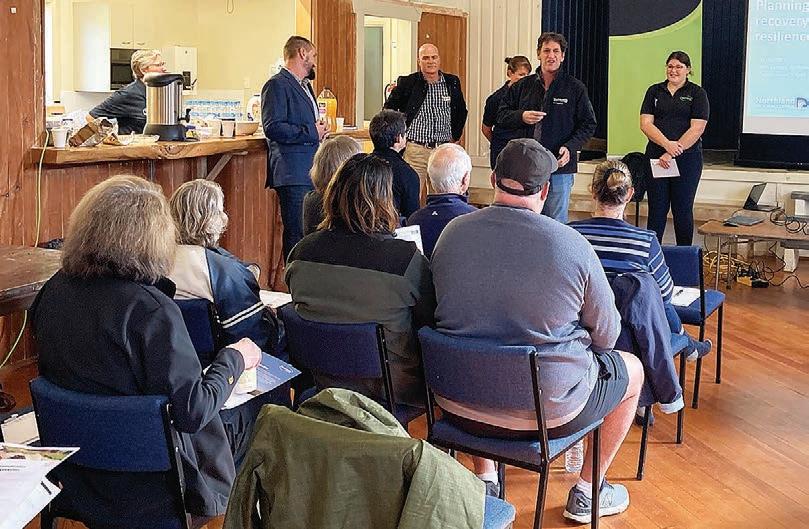
events; and NZ Forest Service’s Mark Forsyth, talking about the nuts and bolts of the Emissions Trading Scheme. These speakers were all Northland based, while Auckland Council was not represented.
KMR currently has 400 sediment reduction plans being developed throughout the district on a 50/50 shared cost basis involving central and local government and the landowner, as well as setting up trial forests to identify appropriate replanting programmes.
retention from the weak soil.
AFTER the serious damage inflicted over Auckland Anniversary Weekend and by subsequent storms and cyclones, there are signs the Kaipara Hills and neighbouring areas are getting on with the recovery process, although much of the land will take years to repair.
The most immediate work has been to clear streams and rivers of branches and slash, remove broken fences, repair culverts and drains, and string hot wires to control livestock.
A couple of weeks ago more than 60 farmers and landowners gathered at the Ahuroa Hall, about 20km west of Warkworth, to hear a series of presentations designed to provide practical information on remediating land affected badly by the recent events. Beef + Lamb NZ’s Extension Manager for the Northern North Island, Katrina Stead, organised the programme, which was designed to advise on planning for both short-term recovery and long-term resilience. The panel of five speakers was made up of John Ballinger from Northland Regional Council talking about the adverse effects of different soil types and sediment flows; Duncan Kervall, a soil scientist from Kaipara Moana Remediation (KMR) who spoke about planting the right sort of trees to minimise erosion and withstand extreme weather
They were followed after the lunch break by soil experts Dr Ants Roberts from Ravensdown and Murray Lane from Ballance, who provided analysis of the recovery rate for the soil types across much of the Far North, how to measure the specific areas of land affected by slips using AI technology and the use of helicropping trials to plan seed sowing for best results without disturbing the soil. The scattering of manuka seeds on slip faces was also recommended as a way to get quick results in areas where nothing else would seed.
Roberts referred to the particularly unstable soil types in the area, made up of layers of sandstone, mudstone and sedimentary rock, so the sandstone doesn’t bind together and tree roots grow sideways not down, looking for nutrients. Water makes the ground so soggy, there is no
Ahuroa farmer Glen Ashton asked the tree experts what planting could be done during the recovery period and questioned strongly why they recommend blocking the waterways, as in his opinion it is essential to allow main channels to remain clear, so the water can flow downhill. In his experience, if you block a creek, it just causes a problem for someone further up the hill. But careful planting of trees and wetlands combined with stream clearance can mitigate the amount of water escaping and causing flooding. A recent research study by Scion has shown 60% of the water which fell over Anniversary Weekend was absorbed by the local forests.
Ashton finishes beef cattle on about 800ha on which slips have taken out a relatively low percentage of the total despite the dramatic appearance of the affected land, though he said in places there are slumps where a whole paddock has shifted 2m sideways. But this is not a new phenomenon, because it has all happened in the past, and eventually the slips heal over. He said he is sceptical of listening to the academic theorists, believing firmly in the principle of local knowledge.
This view was reinforced by another local farmer and soil ecologist, Jo Ritchie, who would
of native bush demonstrate their value in preventing further damage. As noted by the Ballance judges, they are firm believers in the importance of locals getting together to help each other.
about that impulsive call.
I hope we don’t have regrets about where we have found ourselves as a sector.
We’ve been divided in the past over things like getting rid of the silly electoral college that used to elect directors to the industry boards; meat and dairy company takeovers and reforms; abolishing the Wool Board’s grower levy, among other things.
However, we are at a point when the common cause between the dairy sector and sheep and beef is stretched and confidence in our elected representatives on industry boards and other organisations is strained.
A historical means of subjugation has been to divide and rule but we have managed to do it to ourselves.
All over our various responses to the protracted intentions of how our sector is to deal with mitigating our effects on climate change.
I still get a steady stream of correspondents who argue climate change is a normal function of this planet and that humankind has insignificant effect upon it anyway.
I’m not of that view.
National, which set us on this path by signing the Paris Agreement and signed up to the Zero Carbon Bill, has kicked the can down the road and Labour
has yet to let us know what it is planning to do with He Waka Eke Noa, but you have to think the clock has run out on that.
I say divided because although there is a decent vocal opposition to doing anything, there is also a sizeable, silent part of our industry that has been working or thinking about these issues and trying to find a pathway through this complex and divisive issue.
prefer to see farmer groups carry out a case study of damage recovery in the district, informed by the experience of local farmers as opposed to experts from outside the area.
Since 2010 Sue Meszaros and Karyn Maddren have owned a 68ha farm near Ahuroa, where they run Streamland Suffolks with 200 ewes, 80 rams and a few cows and goats. They bought the property because it had good infrastructure including a woolshed, good paddocks and 15ha of covenanted QE2 bush.
In 2017 they were winners in the Auckland section of the Ballance Farm Environment Awards. At the time the judges praised their commitment to stewardship of the land, particularly fencing off streams and riparian planting with buffer zones, and their strong relationships with community groups.
Their farm has suffered from a number of slips, which have seriously reduced their rotational grazing options, but the areas

And then there are the young people.
I actually know some and many of them tell me they are up for these types of challenges and relish the prospect. Similar to me and my mates back in the 1980s and ’90s who saw survival through a rural recession as a decent test. To some extent, it was survival of the fittest. Or more probably of those who could adapt and be prepared to change dramatically.
As a sector, we are always going to be conservative, but we have shown we can accept, even relish change to varying challenges at times.
And have become stronger because of it.
If that statistic of the average
When I visited them a volunteer from the Forest Bridge Trust, a local organisation focused on returning kiwi to the area, was helping them with clearing fallen trees and branches from creeks and the river. The Rural Support Trust has also provided amazing support.
Meszaros was less enthusiastic about the structure and contribution of KMR because of its bureaucratic structure, which apparently prevents it from funding a local catchment group, and its failure to contact the flagship farms which had been part of its predecessor, the voluntary Integrated Kaipara Harbour Management Group.
She also felt there was too much pressure from the forestry proponents at the field day to plant trees without mentioning mānuka, which is the easiest and cheapest option, especially when it is too soon to plant anything else.
There is clearly some good work happening to get Kaipara farms back on track, but there remains a huge amount to do and it seems logical to involve the locals who know the area without being too prescriptive and bureaucratic.

age of the sheep and beef farmer is true about it being in the early sixties, its no wonder we are resistant to change.
It’s just natural. I feel it now. Annoyed when I must learn some new software where the old one has served me well for a couple of decades, or being forced to use my phone to interact with companies where I’d prefer the less efficient way of dealing with an actual person.
That average age can’t keep increasing forever. It’s biologically impossible.
It’s time for a generational change.
Innovative ideas, prepared to adapt and full of energy and enthusiasm.
The scattering of mānuka seeds on slip faces was recommended as a way to get quick results in areas where nothing else would seed.
A historical means of subjugation has been to divide and rule but we have managed to do it to ourselves.
It was the turn of the growers this year at Māori agriculture’s most prestigious award, the Ahuwhenua Trophy, which alternates among dairy, sheep & beef and horticulture.

THE Wi Pere Trust has been named winner of the prestigious Ahuwhenua Trophy for excellence in Māori agriculture –for the second year in a row.
Last year the Wi Pere Trust won the trophy for its sheep & beef farm and this year it was for the trust’s horticulture developments.
As the announcement was made by Minister for Māori Development Willie Jackson, there were jubilant scenes. Wi Pere whānau came on stage to join in the celebrations, and Trudy Meredith, trustee and granddaughter of Wi Pere, received the coveted trophy.
The other finalists were MIL – Whiritoa Orchards and Ngāi Tukairangi Trust.
Jackson congratulated the finalists and winners. He said the achievements of Māori have long been underrated but the Māori economy is now worth up to $80 billion.
Meredith said winning the Ahuwhenua Trophy was wonderful and her ancestor Wi Pere would have been amazed at the trust winning the title for the second year in a row.
She said it had been a very strong competition and all the competitors had learnt so much from each other.
“I thought we had gaps in our business where Ngāi Tukairangi and MIL – Whiritoa Orchards had many strengths, so everybody’s taken lessons back from each other,” she said.
Meredith was delighted to learn about the level of support they had in the district. She said their win means a lot for the people of Tairāwhiti because of what it has gone through.
Ahuwhenua Trophy Management Committee chair Nukuhia Hadfield said it has been a difficult year for most growers and farmers in the primary sector, but especially hard for all the finalists in the competition.
A combination of frosts, floods
and other unseasonal conditions created major problems for all entrants.
Despite adversity, all finalists remained in the competition and put together exceptionally good field days to showcase their respective orchards, she said.
“I would not liked to have been a judge in these circumstances, but certainly full praise to Wi Pere Trust for being judged the winner. I have seen their property and they are very worthy winners.
“But having said that, all the finalists have once again demonstrated the strength and excellence of Māori horticulture,” she said.
The Ahuwhenua Trophy was inaugurated 90 years ago by Māori leader Sir Apirana Ngata and the governor-general at the time, Lord Bledisloe. The objective was, and still is, to encourage Māori farmers to improve their land and their overall farming position with an emphasis on sustainability.
I thought we had gaps in our business where Ngāi Tukairangi and MIL – Whiritoa Orchards had many strengths, so everybody’s taken lessons back from each other.
Trudy Meredith Wi Pere Trust
It was the first time in the history of the event that three wāhine Māori were selected as finalists. To mark the occasion, each received $5000 from Te Tumu Paeroa in addition to other prizes.
avocado orchard, and a berry orchard that is a joint venture with five Māori trusts.
“All three finalists are amazing. The growth in them over the course of the judging programme was phenomenal.
the study tour, but all of them took in absolutely everything,” Hunt said.
Twenty-one-year-old Rehu, Rangitāne, Taranaki, is a leading hand for Turners and Growers in Puketapu, Hawke’s Bay.
The other two finalists in the competition were Alix Te Kere, Ngāti Kahungunu, Ngāti Tu, Ngāti Maru, and Ngāti Maniapoto and Erica Henare, Ngāti Kahungunu, Ngāti Maniapoto.
All three finalists are amazing. They were all taken out of their comfort zone over the course of the study tour, but all of them took in absolutely everything.
Rehu said being part of the competition was an amazing experience and opportunity but she could not have done it without the support of the two other finalists by her side.
She said she was pushed into entering the competition without really knowing what was involved. But as her participation in the competition evolved, she fell in love with the kaupapa and kept on going.

Aaron Hunt, one of the judges, said the industry is in good hands with these three wāhine toa.
As part of the judging process the finalists attended an intensive three-day study tour designed to provide a range of insights, inspiration and experiences across the horticultural sector.
This included a trip to Zespri, a visit to Matakana Island to see Whai Orchard, a kiwifruit operation, Opure ra Trust, an
“They were all taken out of their comfort zone over the course of
He said Rehu demonstrated the three values of the judging criteria: Manaakitanga – looking after others, Whānaungatanga –engagement, and Mana Motuhake – being authentic.
HIGH-resolution data collected from Mahurangi Forest near Auckland during the Auckland Anniversary Weekend floods and Cyclone Gabrielle shows that nearly 60% of the rain that fell during those events was stored in the forest rather than flowing immediately across the ground and into waterways. The forest catchment was in effect acting as a sponge, holding onto water that would
otherwise have added to flooding downstream.
The data was collected as part of the Scion-led five-year $13.7 million Forest Flows research programme, funded by the Ministry of Business, Innovation and Employment, which uses a network of 1717 sensors in 10 forests across New Zealand.

The sensors capture data every five minutes, leading to worldleading insights about forest hydrology.

Scion scientist and programme leader Dean Meason said the analysis is unlocking the mysteries about how water moves through catchments and is being stored, with this year’s extreme weather events providing some unique insights.


“Our network of field sensors, meteorological and hydrological equipment has been collecting data for about two years now. A key part of the Forest Flows research is to understand how water moves through forested catchments during and after weather events that range from light rainfall to heavy storms.
“This type of analysis following extreme weather events hasn’t been done before, or at this scale.”






The sheer volume of data from the enormous number of sensors across the different networks within the Forest Flows programme is the largest of its type globally.
Work is nearing completion to analyse data collected from Titoki Forest in the Tararua District during the same period.
Titoki and Mahurangi forests are the two existing Forest Flows research sites hardest hit during this year’s extreme weather events. Both sites feature erodible soils and have been planted as production forests with radiata pine.
Scion is supported in this research by NIWA, which installed and maintained equipment, and provides ongoing hydrological science expertise. Installations were carried out during 2020 and 2021 at five catchments that provide a rainfall gradient.
These sites are remote, spread from Te Oneroa-a-Tōhe in the far north of Northland, to Māwhera on the South Island’s West Coast.

forest and landscape management decisions.
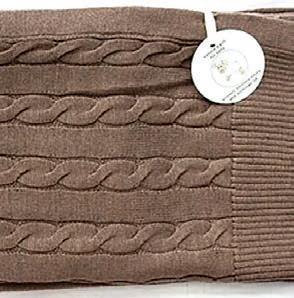






The sheer scale of the data being captured requires machine learning and artificial intelligence to provide advanced analysis. Ultimately results from the programme will reveal how resilient NZ’s planted forests are when faced with floods and drought and how water moving through forests will be affected by climate change.
Data from Mahurangi Forest showed that despite the huge volume of water (229mm) that fell during Auckland Anniversary Weekend and Cyclone Gabrielle, the soil near the surface did not saturate.
Nearly 60% of the rainfall was retained in the catchment (soil, shallow groundwater, and forest canopy). The remaining water made it into the stream flow.
Although the storm caused larger streamflows, it would have been even greater without the forest present.

Real-time data from these stations and from sensors operated by Scion, and remote sensing data from the University of Auckland and XERRA combine to provide a picture of the hydrological processes occurring within planted forests.
This will enable accurate predictions of water storage and release for entire catchments, while also providing data on changes in water quality over time.
At Scion, the data is also helping to develop a digital twin for each forest catchment to support future

This type of analysis following extreme weather events hasn’t been done before, or at this scale.Dean Meason Forest Flows, Scion
Open Day
On the very popular Otapouri road in Owhango is this country charmer home. The home was built in 2010 and has a very practical layout. Keeping the home warm was focused on in the design of the home, heated via underfloor heating powered by a large diesel heater. This heater also heats the water when it is not heated by a solar water heating system. A large kitchen and open plan living space makes the most of the rural views from the home's position. There are four bedrooms, with the master having a very spacious ensuite. An internal access garage plus car port completes the home.
Rosevears
4 2 1 2 Auction 11.00am, Thu 20th Jul, 2023, (unless sold prior), Property Brokers, 27 Hakiaha Street, Taumarunui View Sun 25 Jun 1.00 - 2.00pm Sun 2 Jul 1.00 - 2.00pm Web pb.co.nz/TUR118991

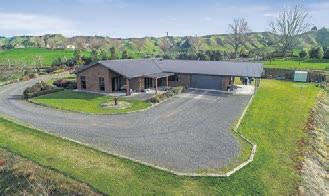
This is an immaculately presented 37.16 ha property with fantastic contour. The property stretches from fertile river flats to easy rolling hills with some medium hills. The property is currently part of a larger farming business, so it has a solid fertilser history and has been grazed well. It has been cropped, contoured and re grassed with quality rye grass and clover cultivars and is clean country with minimal weeds. The current owners fatten cattle and winter lambs, but the options could be endless. It could be used for planting maize and other crops. The property is well supported with its own spring water that is reticulated to troughs.
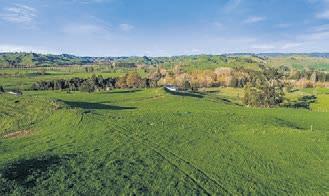




Located in the renowned farming district of the Pohangina Valley, Konewa Station runs from the Pohangina River to the bush edge of the Ruahine ranges. The 490 ha offers a diverse range of land classes, from fertile flats to the boundary of the forest park. The property has been subject to an extensive development program in recent years, giving the ability to run any class of stock, from breeding to finishing. The contour balance is approx. 40% cultivatable and 60% grazing. The existing farming system is 80% finishing and 20% breeding. Improvements on the property include a four bedroom homestead plus excellent garaging and sleepout set in mature grounds, three stand woolshed, multiple sets of sheep and cattle yards, implement/hay shed and sundry farm buildings. Providing outstanding productivity along with hunting and fishing opportunities, Konewa Station is unequalled. This property demands the consideration of anyone wanting to take advantage of such a rare opportunity.
4 2 3
Tender closes 11.00am, Wed 26th Jul, 2023, 54 Kimbolton Road, Feilding View Wed 21 Jun - Farm tour commences at 10.30am Web pb.co.nz/FR164137




Blair Cottrill
M 027 354 5419 E blair@pb.co.nz
Ted Shannon
M 021 833 536 E ted.shannon@pb.co.nz
Stuart Sutherland
M 027 452 1155 E stuarts@pb.co.nz




Welcome to the rock!
Helensville 419 and 429 Kiwitahi Road
Deceased estate
Tender (unless sold prior)
Closing 1pm, Fri 21 Jul 2023
41 Queen Street, Warkworth
View by appointment
John Barnett 021 790 393 john.barnett@bayleys.co.nz

MACKYS REAL ESTATE LTD, BAYLEYS, LICENSED UNDER THE REA ACT 2008
Tender (unless sold prior)
Closing 12pm, Fri 21 Jul 2023
41 Queen Street, Warkworth
View by appointment
John Barnett 021 790 393
john.barnett@bayleys.co.nz

MACKYS REAL ESTATE LTD, BAYLEYS, LICENSED UNDER THE REA ACT 2008
RURAL |
|
GLEN MURRAY 401 Waikaretu Valley Road
The Market will be Met!
This 165ha farm is predominantly north facing with ample hay country. Bore water supplies the two dwellings along with farm. Fenced into 18 paddocks, 13 of which water is supplied via trough.





Three stand woolshed with attached concrete floor workshop, six bay covered lean-to, separate three bay enclosed haybarn, sheep and cattle yards with loading out race and crush.
Dwellings include a Huntly brick house with three bedroom, two bathroom, office, rumpus room plus three car garage, and a two bedroom, two bathroom cottage plus two car garage.
pggwre.co.nz/PUK37867
5 4 TENDER
Plus GST (if any)
(Unless Sold By Private Treaty)
Closes 2.00pm, Thursday 29 June
VIEW By Appointment Only
M 027 473 3632
E avanmil@pggwrightson.co.nz
Jet. Deal to y and Lice now. Guaranteed performance. Unbeatable pricing. Phone 06 835 6863.
www.craigcojetters.com
NORTHERN SHEEP SCANNING. Friendly and reliable service. Based in Northern Waikato, servicing surrounding areas and Northland.
Phone Natalie 021 109 5884.
BIRDS/POULTRY
PULLETS HY-LINE brown, great layers. 07 824 1762.
Website: eurekapoultryfarm. weebly.com – Have fresh eggs each day!!!

FERAL GOATS WANTED. Pick-up within 24 hours. Prices based on works schedule. Phone Bill and Vicky Le Feuvre 07 893 8916 / 027 363 2932.
GOATS WANTED. All weights. All breeds. Prompt service. Payment on pick up. My on farm prices will not be beaten. Phone David Hutchings 07 895 8845 or 0274 519 249. Feral goats mustered on a 50/50 share basis.
HORSE FOR SALE
5-YEAR-OLD 15 hands, STD bred mare. Done one year on-farm. $5000. Phone 027 241 0226.
HORTICULTURE
NZ KELP. FRESH, wild ocean harvested giant kelp. The world’s richest source of natural iodine. Dried and milled for use in agriculture and horticulture. Growth promotant / stock health food. As seen on Country Calendar. Orders to: 03 322 6115 or info@nzkelp.co.nz
LEASE LAND
WANTED
RANGITĪKEI, MANAWATŪ or HB areas. Dairy or grazing farm. Regenerative farming practiced. Open to developing land in partnership. Phone Michael 027 223 6156.



RED DEVON BULLS. Well grown, purebred. Feilding. Phone 027 224 3838.
Our Business
Based in Hawke’s Bay, Catalyst Fuel Refunds is a leading NZ Fuel Excise Duty Refund Agency. Our client base is predominately agricultural businesses’ across New Zealand, that operate petrol vehicles and machinery off-road.

The Opportunity
Join our small but experienced team of Claim Managers to undertake the following for a portfolio of customers:
• Processing fuel excise duty claims.

• Providing exceptional customer service both over the phone and by email.
• Obtaining documentation required to support claims.


• Upholding internal systems and processes.


About You
To be successful in this role, you will have:
• A friendly and professional communication style.
• Strong administration, numerical and problem-solving ability.
• The ability to follow processes with high levels of attention to detail.
• Excellent organisational skills and the ability to self-manage.
• Competence with computer systems.
An understanding and/or interest in the agricultural sector would be advantageous.
The Offer
In addition to working in a modern, progressive business with a diverse and great bunch of people, we provide the following:
• Competitive salary and bonus scheme.
• Additional KiwiSaver employer contribution.
• Regular social and team building events.
• Flexible working arrangements with the opportunity to participate in a four-day work week. Alternatively, part-time hours would be considered.
•
•
•
•
•
•
If this sounds like you please email your CV and cover letter to careers@fuelrefunds.co.nz
For more information on the business please visit www.fuelrefunds.co.nz or if you would like to have a confidential discussion or obtain a position description please phone Donna Braddock (General Manager) on 027 315 7913.

CONTRACTORS
GORSE AND THISTLE SPRAY. We also scrub cut.
Four men with all gear in your area. Phone Dave 06 375 8032.

PUMPS
HIGH PRESSURE WATER PUMPS, suitable on high headlifts. Low energy usage for single/3-phase motors, waterwheel and turbine drives. Low maintenance costs and easy to service. Enquiries phone 04 526 4415, email sales@hydra-cell.co.nz


RAMS FOR SALE
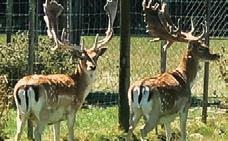
WILTSHIRES-ARVIDSON. Self shearing sheep. No1 for Facial Eczema. David 027 2771 556.


RURAL MASSAGE RELAXING FULL BODY massage in rural Ohaupo. Unwind. De-stress. www. ruralmassage.co.nz or call 027 529 5540. Advertise


WANTED
NATIVE FOREST FOR MILLING also Macrocarpa and Red Gum New Zealand wide. We can arrange permits and plans. Also after milled timber to purchase. NEW ZEALAND NATIVE TIMBER SUPPLIERS (WGTN) LIMITED 027 688 2954 Richard.

GIBB-GRO GROWTH PROMOTANT
PROMOTES QUICK PASTURE growth. Only $6.50+gst per hectare delivered. 0508-GIBBGRO [0508 442 247] www. gibbgro.co.nz. “The Proven One.”
Call Debbie 027 705 7181
R1YR FRSN BULLS 180-220kg
320-370kg R2YR BEEF BRED HEIFERS
R2YR ANG & AX STEERS 450-480kg
A husband notices his wife’s hearing is deteriorating and decides to visit her doctor for advice.
“I can’t speak to my wife directly as she might nd it o ensive, given our old age,” he says to the doc.
“There’s a simple trick you can try to determine her hearing,” explains the doctor. “Simply ask her a question at a distance and if she doesn’t hear you, move slightly closer and ask again until she does.”
That night, the husband arrives home and sees his wife in the kitchen cooking. He thinks to himself, what a perfect opportunity to test her hearing.
He stands in the doorway of the kitchen and promptly asks, “What’s for dinner honey?”
No answer. He moves closer. “What’s for dinner honey?”
Still no answer. He moves even closer. “What’s for dinner honey?”
Still his wife doesn’t answer. He now sees how serious her hearing problem is. At this point, he is standing right next to his wife. “What’s for dinner honey?”
“FOR THE FOURTH BLOODY TIME WE’RE HAVING CHICKEN.”
Subscribe today: agrihq.co.nz/bull-sale-results
Do you have results

A/C: Lex & Daphne Green
Date: Wednesday 21st June
Address: Matamata Saleyards Start Time: 11.30am
COMPRISING: 111 x CRV bred Frsn I/C cows, BW75 PW85
DTC from 15/7, 6 weeks AB, tailed with Hfd. Bulls out 28/12.
15 x CRV bred Frsn I/C carry over cows
BW64 PW85, DTC from 15/7, to AB & Hfd. Bulls out 28/12.
23 x LIC sired Frsn I/C Heifers
BW92 PW102, DTC from 15/7 to Jsy.
Friday 23rd June - Start 11.30 am
Special entries
A/c PiriPiri Stn – Awakino (Capital stock, Farm Sold)
2000 4th – 6th Romdale Ewes SIL 173%
Sufftex Ram 10-3-23
Romney Ewes
70 m/a Perendale Ewes
All ewes are SIL to various rams and dates. Enquiries:
Kevin Mortensen (PGW) 027 473 5858
Brett Wallbank (NZ Farmers) 027 488 1299

Andrew Jardine (Carrfields) 027 397 7005

Ewes shorn 3 weeks, high ezcema resistant rams used, ewes run on very steep coastal country.
A/c Rivendell Fm (P&J Hurley – Capital Stock, Farm Sold)
1500 4th – 5yr Romney Ewes SIL Romney Ram 23-3-23
Paparata Romney Rams used for many years. Ewes farmed on steep hill country in the Aria region.
Kevin Mortensen 027 473 5858
Helping grow the country
TUESDAY, 20 JUNE: 1pm: Matariki Hereford & Woodbank Angus Bull Sale

WEDNESDAY, 21 JUNE: 11.30am: In-Calf CRV Herd & Heifer Dispersal Sale - (Matamata) 1pm: Te Mania Angus Bull Sale
THURSDAY, 22 JUNE: 11.30am: Seven Hills Angus 12.30pm: Stern Angus Bull Sale
5.30pm: Below Sea Level Speckle Park Bull Sale
FRIDAY, 23 JUNE: 2pm: Ratanui Angus Bull Sale


MONDAY, 26 JUNE: 9am: Orere Angus Bull Sale
12pm: Tangihau Angus Bull Sale 4pm: Kaharau Angus Bull Sale
BREEDING BULLS SINCE 1949
June 26, 2023 12 PM
Paddock viewing available from 10 AM
Tangihau Angus Bull Complex 119 Taumata Road, Rere, Gisborne
Please note the change of sale time above.
Tangihau Angus is proud to support local. The 2023 charity bull will be donated to Gisborne land search and rescue.

Studmaster Dean McHardy | +64 27 242 5321 | tangihau.station@xtra.co.nz
https://tangihauangus.co.nz @tangihauangus

 Suz Bremner MARKETS Livestock
Suz Bremner MARKETS Livestock
REDUCING stock classes are becoming an all too familiar sight at saleyards and should be cause for concern for those in the industry. The main culprits are breeding ewes and young dairybeef cattle, which flows into older cattle also being harder to find. Breeding ewe numbers have been inflated over the past few years due to farm sales and policy changes. While most of the in-lamb ewes bought at this time of year are lambed, the growing trend is for this to occur for one season with the ewes heading off to the processors on weaning, with more ewes purchased the following year to complete the cycle.
This farming policy has grown in popularity over the years as more farmers move away from carrying ewes for a year cycle so that more
intensive farming can be used, such as fattening lambs. But the equation is moving seriously out of kilter as the increased demand for lambs comes at a time when ewe numbers continue to fall, and without the ewes it is impossible to have the lambs. Even AI hasn’t managed to work around that one just yet.
While the tallies available look to be good at present, the key point to note is that they have been exaggerated by capital stock sales, and that well will dry up at some stage, leaving a hole that can’t be filled again.



Relatively decent supply has gone through the North Island yards so far to give at least an indication of what the market looks like this season. Compared to last year, AgriHQ accumulated North Island pricing for 4-yearplus and mixed-age ewes is back on average $33-$44 per head.

Two-tooth ewes are holding their
own, though, and selling on a steady market at an average of $186, though some lines have exceeded $200. This could be a promising sign of rebuilding for the future. Four-year-plus ewes are currently averaging $162 and mixed-age, $149.

At these levels breeding ewes are representing good buying, especially considering that the lamb crop continues to diminish, and so competition will only get stronger.
Pulling the numbers apart a bit further, since 2013 2-tooth prices have lifted by the biggest margin at $81 per head while the older age groups have improved $63. In that time frame, 4-year-plus ewes
have varied in average prices from $99 in 2015 up to a massive $206 in 2022 as grass-driven demand meant extra buyers in the 5-year market in particular.






Those same years were the weakest and strongest for the other two classes as well with mixed-age hitting the trough at $90 and peaking at $182 while 2-tooths dropped to an $100 average in 2015 and peaked at $184. For the past few years 2-tooth prices have been the most consistent and since 2018 averages of $172-$186 have been common.
At these levels breeding ewes are representing good buying, especially considering that the lamb crop continues to diminish and so competition will only get stronger on smaller supply going forward.
The significant reduction in dairy-beef calves reared over the past few years is now flowing into





the supply being offered at the saleyards. Volumes of R1 dairybeef cattle are typically low at this time of year and there is already some concern mounting that volumes will be very hard to find, even come springtime.
PGG Wrightson regional livestock manager for Bay of Plenty Simon Rouse said the margins to be made on calf rearing have not significantly changed over many years.

“Minimal margins made years ago are no longer attractive enough to encourage rearers to carry on. We’ve lost some big rearers over the last few years, and it has to have an impact,” he said.
“The solution going forward requires an increase in forwardcontracted 100kg dairy-beef calves, which provides surety for both the rearers’ margin and guaranteed supply at a fixed price for the grower/finisher. There is a huge opportunity.”

Farm sales, policy changes and other trends are having a skewing effect at the saleyards, with, for example, increased demand for lambs coming when ewe numbers are continuing to fall.
After a day off the previous week, it was all hands on deck at Wellsford last Monday as nearly 930 cattle traipsed past the rostrum. This was the biggest tally outside of weaner fairs since October 2021 and accumulated from the short previous week, winter conditions and limited processor space.
Despite the sudden lift in volume there was plenty of buyer interest from Northland, South Auckland and Waikato. Sellers were well-rewarded for quality lines of mainly R2 and R1 steers and heifers.
Dannevirke | June 8 | 912 sheep
Watch real stories about real New Zealanders from the rural sector - told in under five minutes.



Slaughter values are weighted average gross operating prices including premiums but excluding breed premiums for cattle.
provided by
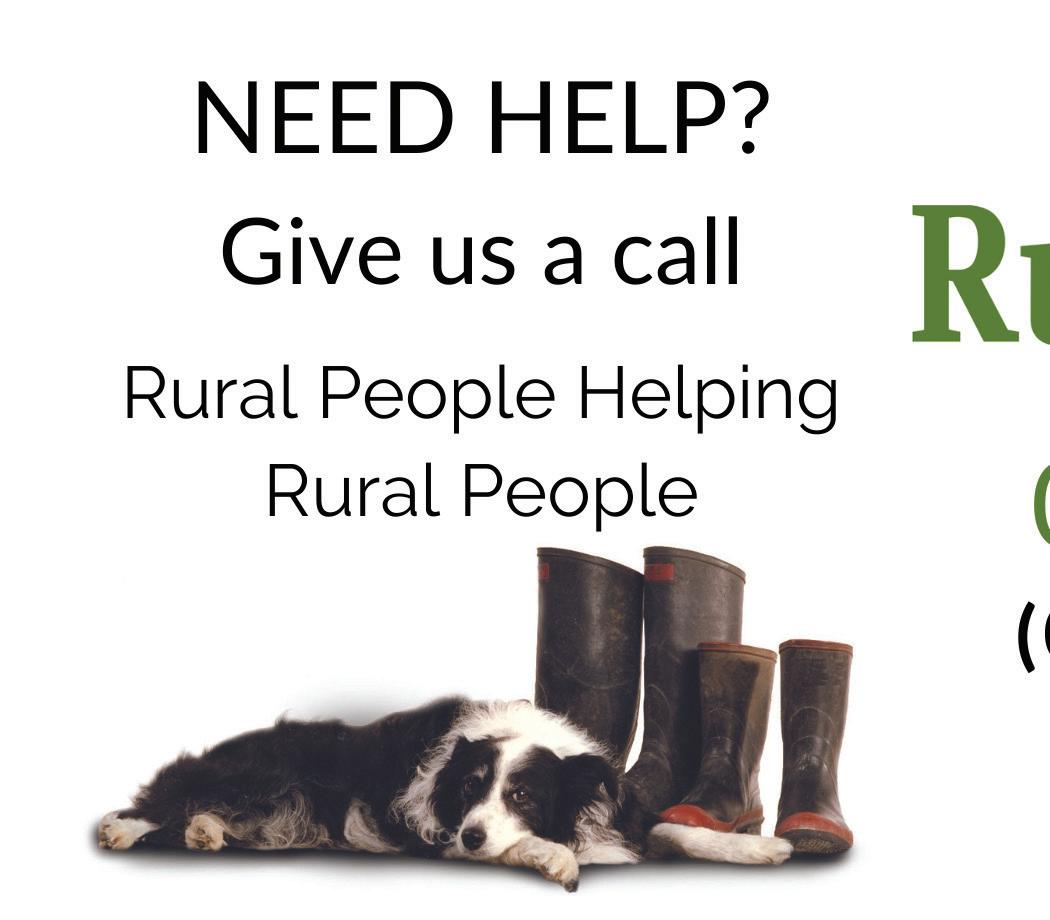

 Philip Duncan NEWS Weather
Philip Duncan NEWS Weather

SOME normality has finally returned to our weather pattern – although the forecast this week still proves we’re in a neutral/chaotic weather set-up.
Widespread frosts last week across both main islands were certainly well overdue and, by the looks of it, welcome by many across the country.
We had -7degCs around Central Otago, -2 at Mystery Creek for Fieldays (with some fog thrown in too) and -5s around Taupō and Rotorua. Frosts made it as far north as the Auckland region, which is certainly a sign that winter is here.
Auckland gets a few frosts a year normally, so having a light frost into rural parts of the upper North Island is actually a good and positive sign that our weather patterns of 2023 aren’t entirely broken.
In fact, we’re very much seeing a normal June pattern around New Zealand at the moment – but
low pressure this week from the Tasman Sea will be followed by another low, and while both of these systems are generally quite weak, they are bringing in more rain to parts of NZ.
This week it may even feel more La Niña-like with a return to sub-tropical northerlies for some regions and rain or showers along the eastern coastline. The milder airflows will also put a temporary halt to widespread frosts.
limited to areas well inland.
With a couple of lows crossing northern areas – and an uptick in north to northeast winds – we’ll be seeing the bulk of the rain falling in eastern regions, especially of the North Island.
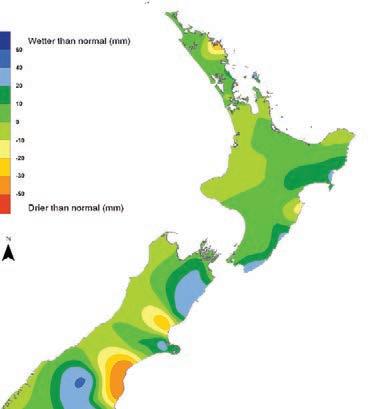
Following on from flooding earlier this year (especially around Cyclone Gabrielle), we’re well aware of how saturated the soil is and how more rain isn’t overly welcome.
The 50-100mm coming for Gisborne and Hawke’s Bay this week will be annoying for many – but hopefully being spread out over days (and having it slide down the eastern coastline too) will mean no one spot gets hit particularly hard.
Predicted Rainfall accumulation 6am 18/06/2023 to 6am 25/06/2023

This week overnight lows will be closer to double digits than they will to zero for many parts of the North Island. Quite the contrast to last week. For the South Island those in the very south and through (or near) alpine areas will likely have a colder week – but certainly not as cold as last week with frosty weather much more
It’s also worth noting that, as we head further towards an official El Niño event, these eastern areas may start to notice fewer rain events. It’s hard to tell someone with a muddy paddock to conserve water – but it may be a good idea to start thinking about the fact we’ve likely peaked in moisture this year, and we’re only going to slide towards a drier trend in the months ahead if the forecasts of El Niño are accurate.
BACK TO NORMAL: We’re very much seeing a normal June pattern around New Zealand at the moment.
Highlights this week
Soil Moisture Anomaly at 9am 14/06/2023
DRYING OUT: We’ve likely peaked in moisture this year, and are likely going to slide towards a drier trend.
• Milder north to northeast winds for many regions this week
• Bulk of the rain is in eastern areas
• General estimates of 50-100mm for Gisborne, Hawke’s Bay and maybe Marlborough
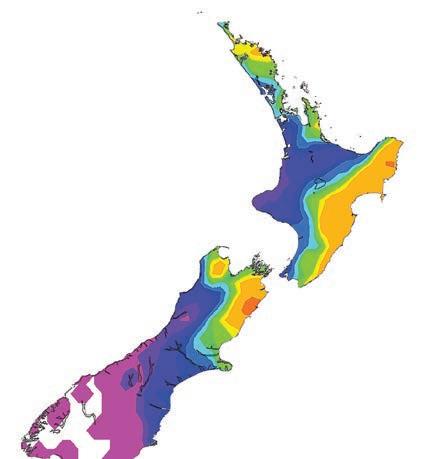
• Fewer frosts nationwide

It’s hard to tell someone with a muddy paddock to conserve water – but it may be a good idea to start thinking about it.